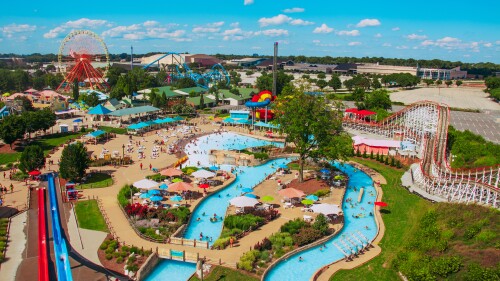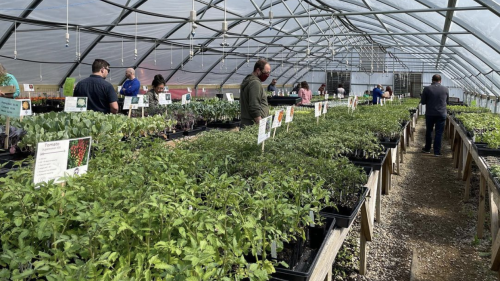The city of Louisville was chartered in 1780 and named after King Louis XVI of France. Now that 240+ years have passed, the city and its streets are chock-full of vibrant history.
It’s safe to say that over the years, the city has been touched by countless historical figures and happenings — many of which have shaped the names of Derby City’s buildings, parks, and streets. In this guide, we’re delving into the history of Louisville’s streets — specifically how they were named.
Downtown
The names of downtown streets serve an obvious function —think numbered streets — but many others have a local history behind their monikers.
Muhammad Ali Boulevard — named after “The Greatest” in 1978, who was born in Louisville’s West End. In 2024, it got an upgrade when it was lined with banners of Ali.
Liberty Street — formerly called Green Street when it was a grassy area for horses to graze. It was named “Liberty” after World War I as a sign of patriotism.
Floyd Street — named for John Floyd, an 18th-century surveyor and pioneer. There are counties in Kentucky and Indiana named for Floyd as well.
Baseball Alley — it led baseball fans to Eclipse Park, where Louisville’s one-time Major League Baseball team played, at 7th and Kentucky Streets.
4th Street — formerly called Wall Street, on a section near the Ohio River near what is now the Galt House Hotel.
River Road — formerly called Water Street, in the section underneath I-64 in downtown Louisville.
Billy Goat Strut — this alley in NuLu hosted goat races in the 19th century. The tradition continues annually with the NuLu Bock & Wurst Fest.
Clay Street — named after the 19th century Kentuckian and statesman Henry Clay.
Shelby Street — named after Kentucky’s first governor, Isaac Shelby.
Witherspoon Street — named after John Witherspoon, a signator on the Declaration of Independence.
Broadway — was originally known as Prather Street, named after Thomas Prather, one of Louisville’s first merchants in the 18th century. It became Broadway in the 1850s.

Story Avenue at the intersection with Frankfort Avenue, as it looked in 1945.
Photo courtesy Archives & Special Collections, University of Louisville
Butchertown
It’s now home to a modern soccer stadium, but for decades Butchertown was known for its slaughterhouses. Several of the neighborhood streets are named for people you probably learned about in elementary social studies.
Washington Street — named for George Washington. Parts of the street held other names through the years, including Maiden Lane and Nelson Street. A stretch of Washington Street in downtown Louisville was also historically known as Nelson Street.
Bonus: The Vernon Lanes bowling alley on Story Avenue was named after Mount Vernon, Washington’s home.
Adams Street — named for John Adams, the second President of the United States.
Quincy Street — named for John Quincy Adams, the sixth US president.
Franklin Street — named for Benjamin Franklin, who signed the Declaration of Independence.
Some of the neighborhood’s other streets, though, were named after locally prominent landowners, civic leaders, and politicians.
Cabel Street — named for William H. Cabell, a 19th-century Virginia politician who played a role in Kentucky’s history prior to its statehood.
Story Avenue — named for John W. Story, a carpenter and civic leader who owned land in the area in the 19th century.
Campbell Street — named for John Campbell, a land owner and proprietor in Louisville’s earliest beginnings.
Cowan Street — named for Andrew Cowan, one of the founders of Louisville’s park system. He’s credited with inviting Frederick Law Olmsted to the city, eventually leading to the design of the Olmsted parks system.
Blue Horse Avenue — named for Blue Horse Motors, a historic motor vehicle business from the area.
Branden Klayko Alley — named for the local urbanist who died in 2017. His blog, Broken Sidewalk, is a repository of knowledge on the City of Louisville.
Bonus: Want to hear more about the background of these Butchertown streets? Louisville historian Tom Owen led a walking tour of the area.
Portland
The Portland neighborhood is one of the oldest in the city, and it dates back to a time when it was a separate town completely. Louisville annexed Portland in 1837, so many streets in the neighborhood have since been renamed.
Portland Avenue — it was built in 1818 to connect Louisville and Portland. It was originally known as the Louisville & Portland Turnpike.
34th Street — it was originally known as Commercial Street, and was one of the busiest parts of Old Portland. The oldest known house in Louisville, the Squire Earick House, is located there.
Northwestern Parkway — part of the parkway was once called High Street, named because it was on the high bank of the Ohio River. Only a dirt trail remains after the construction of I-64.
The Highlands
Construction of the Louisville and Bardstown Turnpike in 1819 brought German immigrant farmers to the area now known as the Original Highlands neighborhood. In the early 19th century, it was known as New Hamburg.
Bardstown Road — was originally known as the Louisville and Bardstown Turnpike.
Barret Avenue — named after Louisville’s prominent Barret family, whose members included local judge and politician Alex G. Barret who is also the namesake of Barret Middle School. The section of Barret between Baxter Avenue and Broadway used to be called Underhill Street, but was re-named Barret in 1923.
Baxter Avenue — named after John G. Baxter, who served as the Mayor Louisville from 1870 to 1872, and again from 1879 to 1881. Baxter Square Park — Louisville’s first park —is also named in his honor.
Rufer Avenue — named after Charles Rufer, a German immigrant who operated a hotel and restaurant in downtown Louisville.
Clifton
Most of the buildings and homes in Clifton were built between 1870 to 1930, but the neighborhood began with the construction of what is now Frankfort Avenue in the early 19th century.
Frankfort Avenue — named after the capital of Kentucky. It was previously known as the Louisville and Shelbyville Turnpike, built in 1818.
Mellwood Avenue — was named after the Mellwood Distillery, which operated from the 19th century through prohibition. It had previously been known as Southall Street and Reservoir Avenue.
Bonus: Local historian and architect Steve Wiser has given talks on the history of Louisville street names. You can find more historic streets in this transcript of one from 2013.














